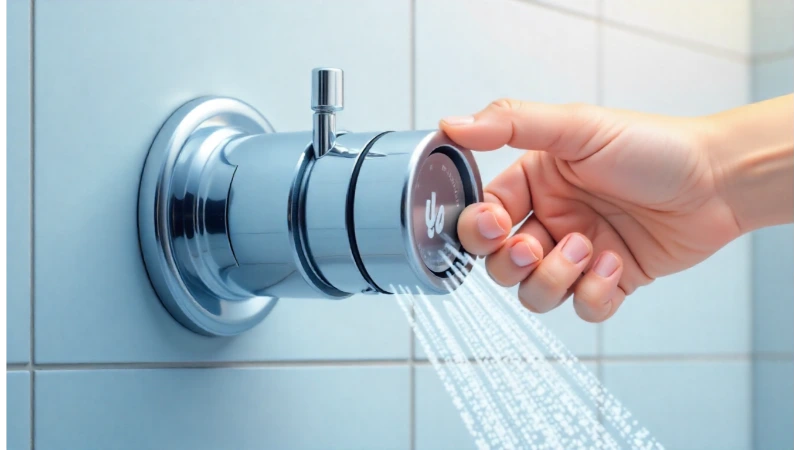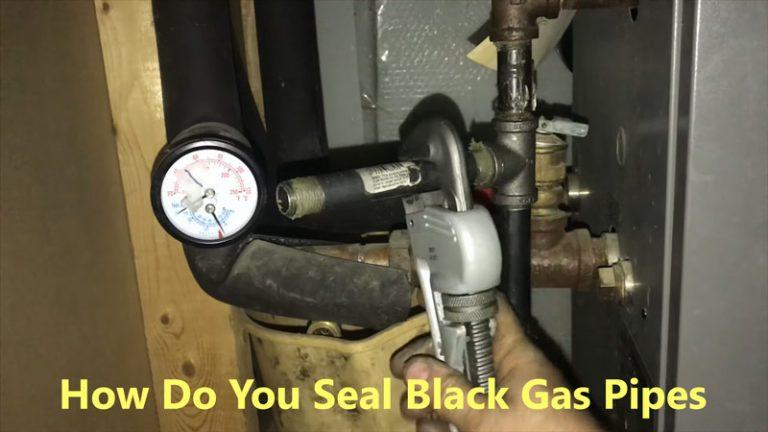Shower Too Hot or Too Cold? Your Ultimate Fix-It Guide
There are few things more frustrating than stepping into a shower, expecting a relaxing stream of warm water, only to be hit with an icy blast or a scalding spray. This daily discomfort is a common household problem that leaves many wondering what to do.
If your shower is too hot or too cold, you’re not alone. The good news is that the solution is often simpler than you think. This guide will walk you through the causes and provide actionable steps to reclaim your perfect shower temperature.
You'll Learn About
Why Is My Shower Temperature So Inconsistent?
Understanding the source of the problem is the first step toward a solution. Your shower’s temperature issues usually stem from one of three areas: the shower valve itself, your water heater, or the overall water pressure in your home’s plumbing.
We’ll explore each of these potential culprits in detail. By pinpointing the cause, you can apply the right fix and avoid unnecessary repairs.
The Culprit in the Wall: The Shower Mixing Valve
Inside your wall, behind the shower handle, is a critical component called a shower mixing valve. Its job is to blend hot and cold water to deliver your desired temperature. When this valve fails, chaos ensues.
Older homes may have simple valves that don’t adjust for pressure changes. Modern valves, like pressure-balancing and thermostatic models, are designed to prevent sudden temperature spikes but can still wear out over time.
Water Heater Woes: The Source of Your Hot Water
Your water heater is the heart of your home’s hot water system. If it’s not working correctly, no faucet will get consistently hot water, especially your shower.
For traditional tank heaters, a buildup of sediment at the bottom can reduce its heating efficiency, leading to lukewarm water. A broken dip tube is another common issue, causing cold water to mix with hot water at the top of the tank before it even leaves.
The age of your unit is also a major factor. If you’re constantly asking yourself, should I replace a 30-year-old water heater, the answer is likely yes, as its performance and reliability have significantly declined.
Tankless water heaters can also cause issues, such as the infamous “cold water sandwich” effect or problems maintaining temperature if the flow rate is too low. Using a tankless water heater timer can help manage its operation, but it won’t fix underlying flow problems.
The Pressure Problem: When Other Appliances Interfere
Have you ever been enjoying a warm shower when suddenly the water turns scalding hot? This is often caused by a sudden drop in cold water pressure elsewhere in the house. Someone flushing a toilet is the classic example.
The toilet refills with cold water, “stealing” it from your shower. With less cold water in the mix, the ratio shifts, and you get a blast of hot water. This indicates your shower valve isn’t compensating for pressure changes correctly.
Step-by-Step Guide: How to Fix a Shower That’s Too Hot or Too Cold
Now that you understand the potential causes, it’s time to troubleshoot. We will start with the simplest DIY checks and move toward more involved solutions.
DIY Diagnosis: Simple Checks You Can Do Now
Before you grab any tools, perform these quick diagnostic tests. They can help you narrow down the source of your shower temperature problem without any disassembly.
First, check the hot water at other faucets, like your bathroom sink. If the water is consistently hot there but not in the shower, the problem is likely isolated to the shower’s valve or head.
Next, inspect your showerhead for mineral buildup. Hard water deposits can clog the nozzles, reducing water flow and sometimes affecting the temperature balance. A simple cleaning with vinegar can often solve this.
Solution 1: Adjusting the Anti-Scald Device (Rotational Limit Stop)
Many modern shower faucets have a safety feature called an anti-scald device, or rotational limit stop. This plastic ring is set at the factory to prevent the handle from turning too far to the hot side, protecting users from burns. Sometimes, it’s set too conservatively, preventing the water from ever getting hot enough.
Adjusting it is a common and easy fix for a shower that’s too cold. You will need a screwdriver and possibly an Allen wrench. Always turn off the water supply to the shower before starting this process to avoid accidents.
First, carefully remove the shower handle. This usually involves prying off a decorative cap and unscrewing a single screw. Once the handle is off, you will see the plastic rotational limit stop, which often looks like a gear. To allow for more hot water, you simply pull it out, rotate it slightly counter-clockwise, and push it back into place. Reassemble the handle and test the temperature.

A close-up of a shower valve’s anti-scald device being adjusted to fix a shower that is too hot or too cold.
Solution 2: Flushing Your Water Heater
If your shower water is lukewarm or runs out of hot water quickly, sediment in your tank-style water heater is a likely suspect. Over time, minerals from the water settle at the bottom of the tank, creating a barrier that makes it harder for the burner to heat the water.
Flushing your water heater annually removes this sediment and restores its efficiency. This is a DIY job, but it requires caution. You must turn off the gas or electricity to the unit before you begin.
The process involves connecting a hose to the drain valve at the bottom of the tank and letting the water drain out until it runs clear. While it’s a routine task, it’s important to understand the components you’re working with. It’s a common question to ask how fragile are water heaters, and improper handling during maintenance can cause damage.
Solution 3: Cleaning or Replacing the Shower Cartridge
The shower cartridge is a small, replaceable part inside the mixing valve that controls water flow and temperature. If your handle is stiff, leaks, or fails to regulate temperature, the cartridge is probably worn out.
Replacing a cartridge is a more involved DIY project but is manageable for most homeowners. You must shut off the main water supply to your house or the specific lines leading to the shower. After removing the handle and faceplate, you’ll see the old cartridge held in by a clip or nut.
You may need a special “cartridge puller” tool to get the old one out, especially if it’s stuck due to mineral deposits. Once removed, you can insert the new, identical cartridge, re-secure it, and reassemble the faucet. This single part is often the key to fixing a shower that’s too hot or too cold.
Advanced Solutions & When to Call a Professional
While many temperature issues can be fixed with a little DIY effort, some problems are more complex. These situations require the expertise and tools of a licensed plumber.
Upgrading Your Shower Valve
If you experience scalding bursts of water whenever a toilet is flushed, your old shower valve is to blame. The best long-term solution is to upgrade to a pressure-balancing or thermostatic mixing valve. These modern valves automatically adjust to pressure changes, keeping your shower temperature stable and safe.
This is not a simple replacement. It requires opening the wall to access the plumbing, cutting and soldering pipes, and ensuring a watertight seal. This job should always be left to a qualified professional.
Addressing System-Wide Water Pressure Issues
If you notice fluctuating temperatures and weak flow at multiple faucets, you may have a larger plumbing issue. Problems like partially clogged main lines or a failing whole-home pressure-reducing valve (PRV) can affect your entire system.
Diagnosing these problems requires specialized tools and knowledge of your home’s plumbing layout. A plumber can measure pressure throughout your system and identify the bottleneck causing your shower to be too hot or too cold.
| Symptom | Possible Cause | Potential DIY Fix | When to Call a Pro |
|---|---|---|---|
| Shower is only lukewarm | Anti-scald device set too low | Adjust the rotational limit stop | If adjusting the stop doesn’t work |
| Hot water runs out fast | Sediment in water heater | Flush the water heater tank | If flushing doesn’t help or tank is leaking |
| Sudden scalding/freezing water | No pressure-balancing valve | None; requires valve replacement | Immediately; this is a safety hazard |
| Leaking or stiff shower handle | Worn out shower cartridge | Replace the shower valve cartridge | If you can’t remove the old cartridge |
| Problem at all faucets | Water heater issue / Main line clog | Check water heater thermostat | For any system-wide pressure or temp issues |
Preventing Future Shower Temperature Problems
Once you’ve fixed your shower, a little preventative maintenance can keep the problem from returning. Consistent care ensures your plumbing and water heater function reliably for years to come.
Regular Water Heater Maintenance
Don’t wait for a problem to arise. Perform annual maintenance on your water heater. For tank-style heaters, this means flushing the sediment from the tank each year.
This simple task improves efficiency, extends the life of the unit, and helps prevent the frustrating lukewarm showers that signal a problem.
Don’t Ignore Drips and Leaks
A dripping showerhead or a leaky faucet handle is more than just an annoyance. These small drips often signal that an internal component, like a cartridge or O-ring, is failing.
Addressing these small leaks promptly can prevent the part from failing completely, which could lead to more significant temperature control issues down the road.
Consider a Whole-Home Water Softener
If you live in an area with hard water, mineral buildup is your constant enemy. This buildup can clog showerheads, destroy shower cartridges, and reduce the efficiency of your water heater.
Installing a whole-home water softener treats the water before it ever reaches your fixtures. This prevents mineral scale from forming, protecting your entire plumbing system and preventing many common causes of a shower being too hot or too cold.
Conclusion: Reclaim Your Perfect Shower
A shower that is too hot or too cold can ruin your morning routine, but it’s a problem you can solve. By systematically diagnosing the issue, you can determine whether it’s a simple adjustment or a more complex repair.
Start with the easy fixes: check your anti-scald device and clean your showerhead. If the problem persists, investigate your water heater and shower cartridge. For major issues like valve replacement or system-wide pressure drops, don’t hesitate to call a licensed plumber.
With a little knowledge and the right approach, you can restore balance to your shower and ensure a safe, comfortable, and perfectly warm experience every time.

